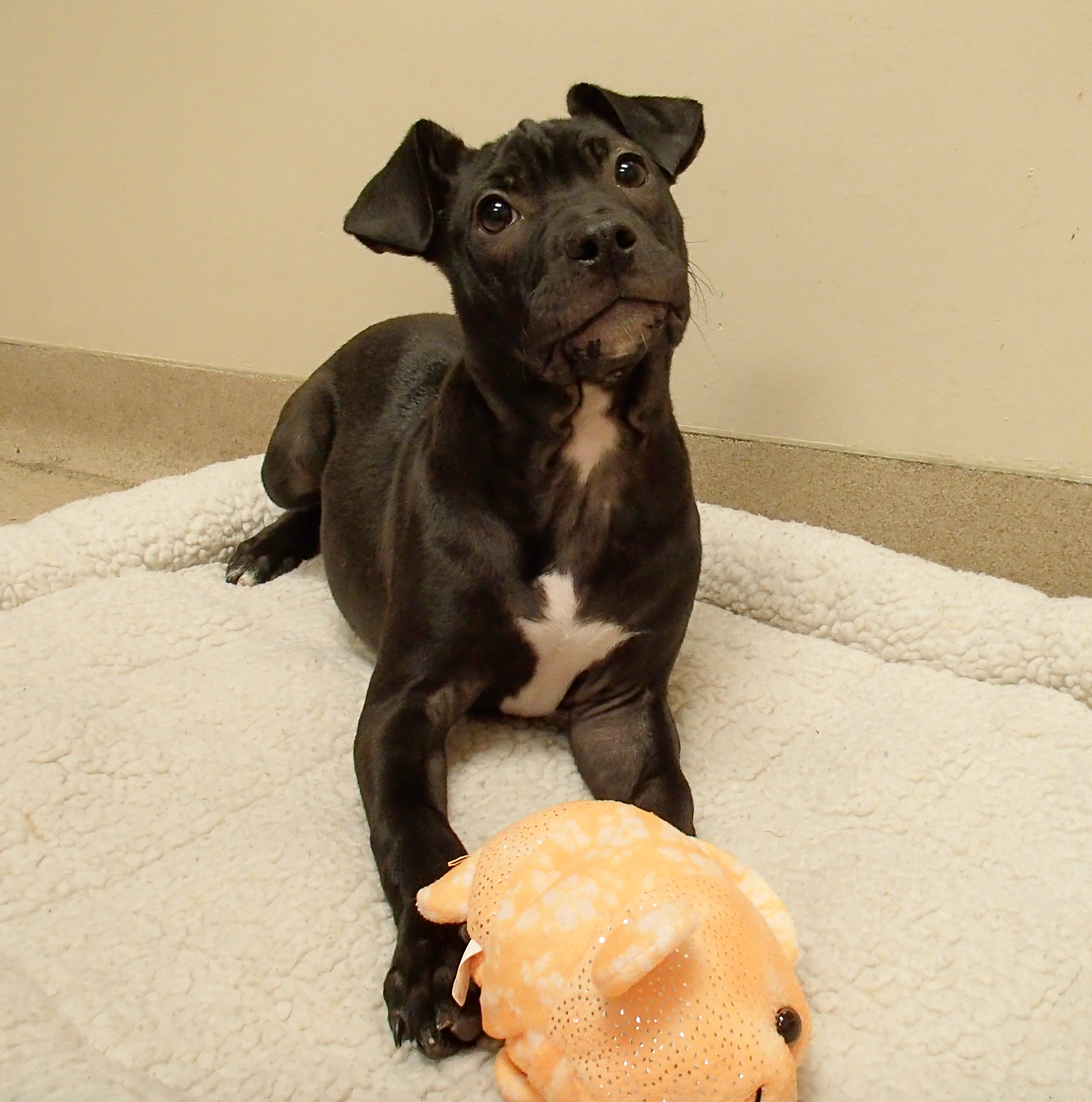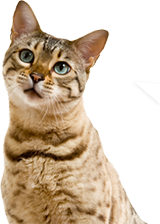Housetraining for Puppies
 Housetraining puppies takes time, patience, commitment, and a lot of consistency. For the pup, it involves more than just learning where to go to the bathroom, but also learning how to “hold it” until they get to an appropriate bathroom location and how to notify you to get them there. Puppies are not able to hold their bladders and bowels for more than a few hours because their muscles are still developing. However, even with limited control, you can begin housetraining early, and experts recommend starting the process as soon as you bring your puppy home. Be prepared for accidents early on as your puppy develops bladder control. This time frame varies from puppy to puppy.
Housetraining puppies takes time, patience, commitment, and a lot of consistency. For the pup, it involves more than just learning where to go to the bathroom, but also learning how to “hold it” until they get to an appropriate bathroom location and how to notify you to get them there. Puppies are not able to hold their bladders and bowels for more than a few hours because their muscles are still developing. However, even with limited control, you can begin housetraining early, and experts recommend starting the process as soon as you bring your puppy home. Be prepared for accidents early on as your puppy develops bladder control. This time frame varies from puppy to puppy.
When starting your journey in housetraining, it is important to remember not to focus on where your puppy shouldn’t eliminate – instead, you need to encourage and reinforce where you do want them to go. The goal is to instill good habits during this time. In order to successfully housetrain your new puppy, it is important to establish a routine, supervise them, confine when necessary, expect accidents, and make plans when you will be away for a longer period of time.
Establishing a Routine
As a general rule, a puppy can control their bladder one hour for every month of age. This means if your puppy is 3 months old, they can hold it for up to 3 hours and should not go longer than that or an accident is almost guaranteed.
Puppies should be taken out frequently, and that should include:
- When you wake up
- 10-20 minutes after meals
- When the puppy wakes up from a long nap
- 10-20 minutes after you notice them having a long drink of water
- 10-20 minutes into a play session in the home (exercise can stimulate the bladder and bowels)
Your puppy will benefit from a predictable, consistent routine. This should include confinement time, potty breaks, mealtimes, play time, training time, walks, and all other activities that are part of your puppy’s daily life. You should plan to take them out to eliminate around the same times every day. For the first few weeks, this will be frequently. Once your puppy is fully housetrained and has complete control of their bladder and bowels, this can typically be reduced to when you wake up, when you get home from work, and before you go to bed. Mealtimes should happen at the same time every day, as well, because this will make elimination more regular. Create a routine to take your puppy out to eliminate immediately after they have had their meal.
During the housetraining period, you should always be with your puppy on potty breaks, either on a leash or in the fenced-in yard. This is important because you want to quickly reward your puppy for eliminating outside. By straying with them during potty breaks, you can deliver an immediate reward (praise, a treat, a toy, etc.) rather than waiting until they come back inside the house, which could inadvertently teach them that coming back inside is what they get rewarded for instead of going potty. An immediate reward after your dog has finished their business teaches them that eliminating outdoors is rewarding and encourages them to repeat that behavior in the future.
Supervision
By always having an eye on your puppy, you are not giving them the opportunity to soil in the house. You can do this by using baby gates to keep your puppy in the same room as you and restricting access to the rest of the home, tethering your puppy to you with a six-foot leash, or utilizing a puppy pen or crate. These options allow you to closely monitor your puppy and watch for signs that they need to eliminate. Being able to watch for these signs is beneficial because you are able to reward the “gotta go” signals. When your puppy begins to show these signals (pacing, circling, and sniffing) you can applaud the signaling and rush them outside right away. This will encourage your dog to become more demonstrative and communicate when they feel the urge to go.
Confinement
Preventing your puppy from eliminating in the wrong place is the most important part of house training. When you are unable to supervise them, they should be confined to an area small enough that they won’t want to eliminate there. Since most of us are not able to keep an eye on our puppy at every second, having a safe and comfortable confinement area is key to housetraining. Appropriate confinement areas include crates or rooms that are gated off to be small enough for them to comfortably stand, lie down, and turn around in. The confinement area should be this small because most dogs naturally avoid soiling in their sleeping areas. This will prevent unwanted accidents and help increase bowel and bladder control. As your dog continues to be successful by going to the bathroom outdoors, you can slowly increase the size of their confinement area when they’re unsupervised. Please remember that no matter where your dog is in their housetraining journey, they should be let outside immediately after being released from confinement.
Expect Accidents
Mistakes happen! At some point, most puppies will have an accident in your home. Remember, both you and your puppy are learning each other’s schedule and routine, so it’s inevitable that mistakes will happen along the way for the both of you. Accidents are a normal part of being a puppy, so expect this to happen and prepare yourself for when it does.
If your puppy has an accident in the home:
- If you catch your puppy while they’re actively eliminating in the house, do something to interrupt them. You can do this by making a noise but be careful not to scare them. After making the noise, immediately take them outside and reward them when they finish eliminating there.
- Do not punish your puppy for soiling in the house. If you find a soiled area in the home, it is too late to correct their behavior. Any type of punishment – including scolding your puppy, or even worse, taking them to the spot and rubbing their face in it – will only make them afraid of you. If they associate this fear with going to the bathroom, they may start only eliminating when you’re not looking, and rarely where you want them to. Dogs don’t understand what they are being retroactively punished for and this will do more harm than good.
- Clean the mess thoroughly. This is very important because dogs are attracted to areas that smell like urine or feces and are highly motivated to continue eliminating in those spots. When cleaning up the mess in your home, be sure to use enzymatic cleaners specifically made for pet urine. Standard household cleaners will destroy stains and odors detectable to humans, but your puppy may still be able to smell them.
Alternate Plans
You should always make alternate plans for your puppy if you will be away for long periods of time. You can arrange to have a friend, family member, a neighbor, or a professional pet-sitter/dog-walker to take them out on bathroom breaks. If you are unable to have a person come over for a potty break, you can set up a litterbox or potty pads in a play pen to allow your puppy to potty in one area and rest in another.
Additional Notes about Housetraining
- It may be useful to teach your puppy a cue for eliminating behavior (ex. “go potty,” “do your business,” etc). Whatever you choose to say, only state it once right before they begin to eliminate, don’t say it over and over. Once they are completely done eliminating, give them a big reward – just be sure you aren’t praising or giving them the treat while they’re still actively going, as this can distract them from completing their business and create confusion.
- If you want your dog to eliminate in a fenced yard while off-leash, but also want them comfortable to go during walks while they’re on leash, you will have to practice these routines both with and without a leash.
- During the housetraining process, focus on going potty first when going outside. After your puppy has eliminated, you can then engage in play or games.
- It is important that your pup gets acclimated to eliminating in a variety of outdoor places and not solely in your yard. This is especially crucial if you want to take your dog on outings, if they’ll travel with you on vacation, or even for mandatory trips like vet appointments.
- Some people may choose to use “puppy pads” (absorbent, disposable, potty-training sheets) to kickstart the housetraining process. If so, you’ll start by using them indoors and gradually moving them closer and closer to the door over time before eventually place them outdoors to teach your puppy this is where they should go. Puppy pads can also be helpful for people who live in apartments or condos that have a patio. If this is the case, you can also choose to use fake grass or build a “litter box” with sod to make life more convenient.
- Dogs can develop a preference for eliminating on certain surfaces or materials (ex. grass, straw, stones, etc.) which can be helpful for creating a defined “bathroom” space in your yard, but it can also limit their adaptability to new environments. You should try to expose your puppy to different surfaces as a part of housetraining.
